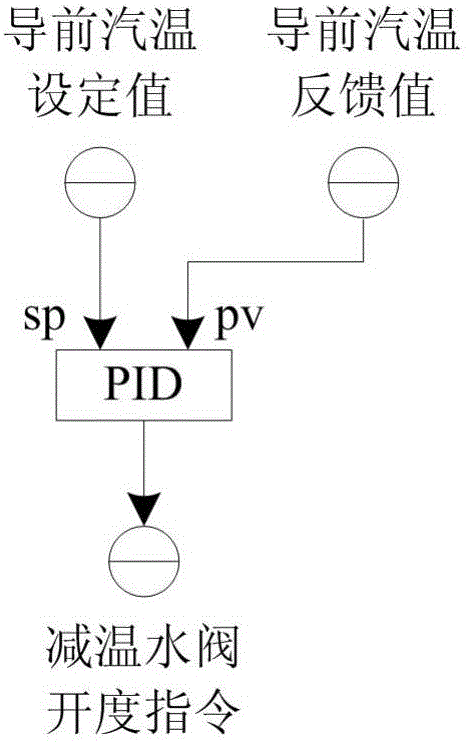High-quality steam temperature control system for power station boiler
A technology for steam temperature control and power station boilers, applied in the field of boilers, can solve problems such as changes in the gain of the inert zone of the steam temperature object, affecting the control quality, etc., to achieve the effect of simple debugging and stabilizing the steam pressure of the boiler
- Summary
- Abstract
- Description
- Claims
- Application Information
AI Technical Summary
Problems solved by technology
Method used
Image
Examples
Embodiment Construction
[0017] Aiming at the problem of poor control quality of overheating and reheating steam temperature of thermal power units under the condition of large changes in desuperheating water flow, the present invention proposes a boiler that uses the specific enthalpy of steam in the leading area instead of the leading steam temperature as a fast loop feedback signal Steam temperature control system. The control system aims at the deficiencies of the original control system, uses the steam temperature and pressure signals in the pilot area to calculate the specific enthalpy signal of the steam in the pilot area, and replaces the steam temperature signal in the original control system with this signal. Utilizing the characteristic that the specific enthalpy signal of the steam in the leading area is very stable to the steam temperature signal in the inert area, the gain in the inert area of the controlled object is guaranteed to be stable under the condition of a large change in the ...
PUM
 Login to View More
Login to View More Abstract
Description
Claims
Application Information
 Login to View More
Login to View More - R&D
- Intellectual Property
- Life Sciences
- Materials
- Tech Scout
- Unparalleled Data Quality
- Higher Quality Content
- 60% Fewer Hallucinations
Browse by: Latest US Patents, China's latest patents, Technical Efficacy Thesaurus, Application Domain, Technology Topic, Popular Technical Reports.
© 2025 PatSnap. All rights reserved.Legal|Privacy policy|Modern Slavery Act Transparency Statement|Sitemap|About US| Contact US: help@patsnap.com



